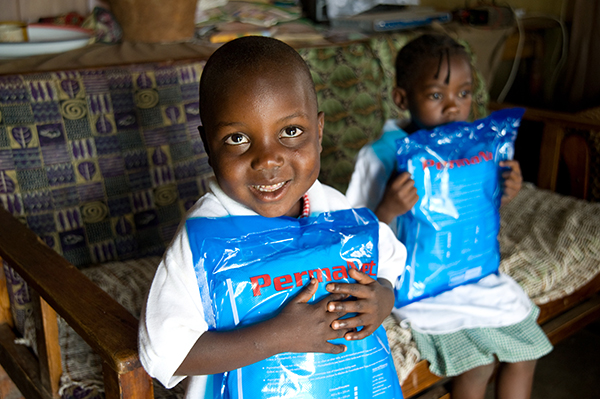You are here
Bed Nets for Children
 The CDC Foundation's Bed Nets for Children Program helps the Centers for Disease Control and Prevention (CDC) teams purchase and distribute insecticide-treated bed nets to help protect children and families from malaria. Malaria is a leading cause of death and disease worldwide.
The CDC Foundation's Bed Nets for Children Program helps the Centers for Disease Control and Prevention (CDC) teams purchase and distribute insecticide-treated bed nets to help protect children and families from malaria. Malaria is a leading cause of death and disease worldwide.
The Bed Nets for Children Fund is currently supporting the Bidi Bidi Camp in Uganda. Nearly 277,000 refugees have made a home in the Bidi Bidi camp of Uganda to escape the civil war in South Sudan. Living in close quarters with poor nutrition, decreased immunity and lack of access to health services has led to a recent dramatic increase in malaria. The CDC Foundation, working with CDC, needs your help to provide insecticide-treated bed nets to Bidi Bidi to help stop the spread of malaria.
Join with us to make sure every family in Bidi Bidi has a bed net. Give Now
What is malaria?
Malaria is caused by a parasite carried by the Anopheles mosquito. People with malaria typically are very sick with high fevers, shaking chills and flu-like illness, and they can die if they do not receive proper medical treatment. Pregnant women and children under 5 who have little to no immunity are more likely to become severely ill and die.
Malaria typically is found in tropical and subtropical countries where higher temperatures allow the Anopheles mosquito to thrive. Malaria parasites, which grow and develop inside the mosquito, need warmth to complete their growth before they are mature enough to be transmitted to humans.
In sub-Saharan Africa, mosquitoes transmit malaria very efficiently, and the type of malaria parasite most common in the region causes severe, potentially fatal disease. Health experts face many challenges to building solid malaria control programs in the region, including an overall lack of resources, political instability and the emergence of malaria parasites that are increasingly resistant to antimalarial drugs.
What is an insecticide-treated bed net?
A bed net is a net that hangs above a sleeping space, usually a bed or matt, and provides a physical barrier between the malaria-carrying mosquito and the person at risk of getting the disease. An insecticide-treated bed net protects the person sleeping under the net even if the net has small holes in it, because the insecticide kills mosquitoes that do get through the net before they reach the sleeping person. Since insecticide-treated nets kill the mosquitoes, they help reduce malaria transmission community-wide (if there is high use of insecticide-treated nets in the community).
Even where insecticide-treated nets have been recommended for all children under 5 years, most children do not sleep under a bed net. A long-lasting insecticide-treated bed net costs an average of $5 and protects up to three children. Unfortunately, this cost is too high for most families in poor rural African communities who survive through subsistence farming.
How does CDC distribute bed nets? Who benefits?
The CDC Foundation's Bed Nets for Children Program provides insecticide-treated bed nets to CDC-affiliated programs.
- Multiple individuals and organizations
- CDC’s Global Health Center
- Haiti
- Kenya
- Uganda
